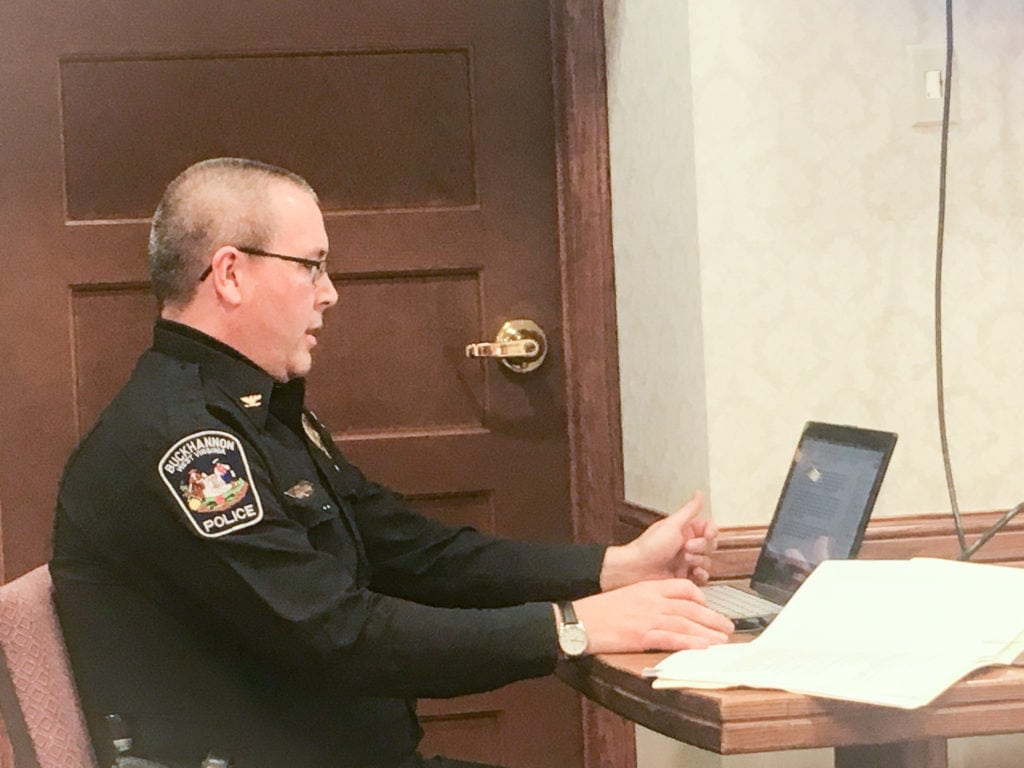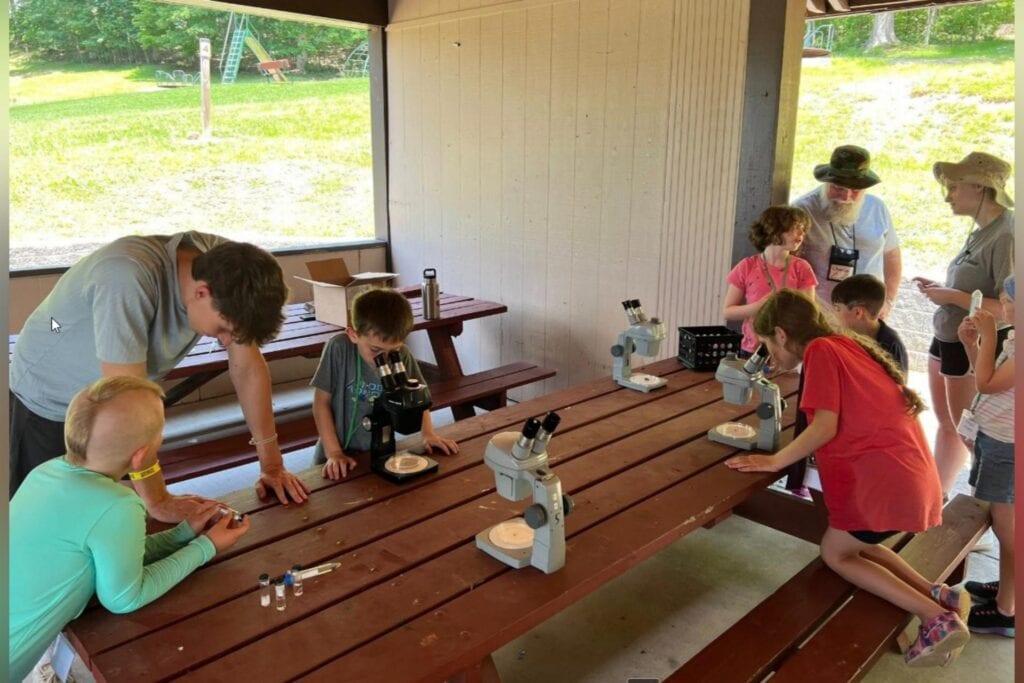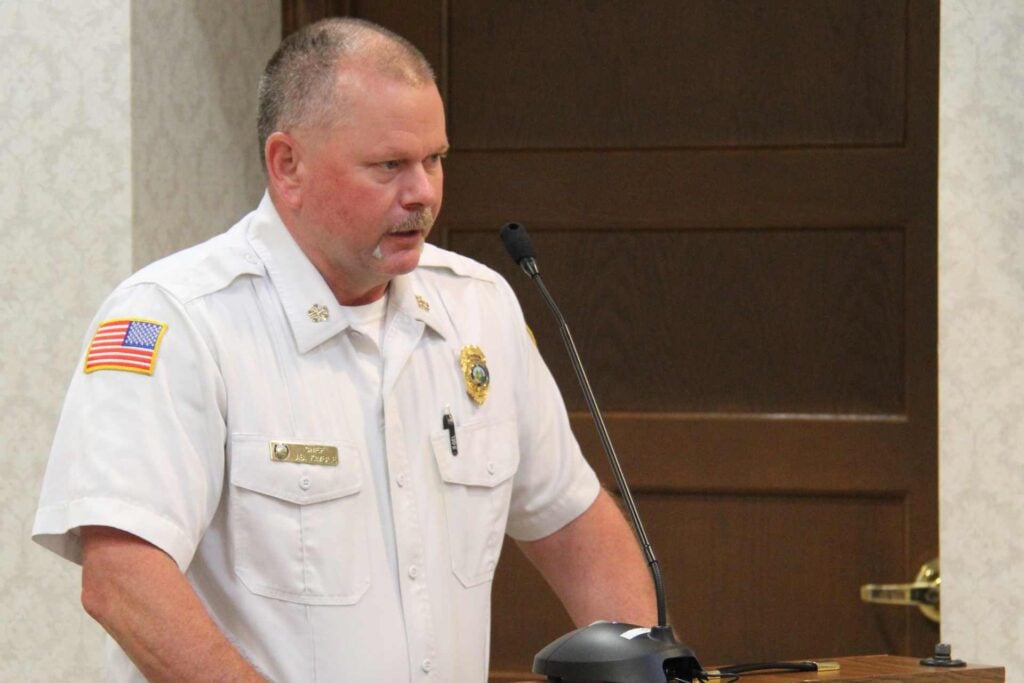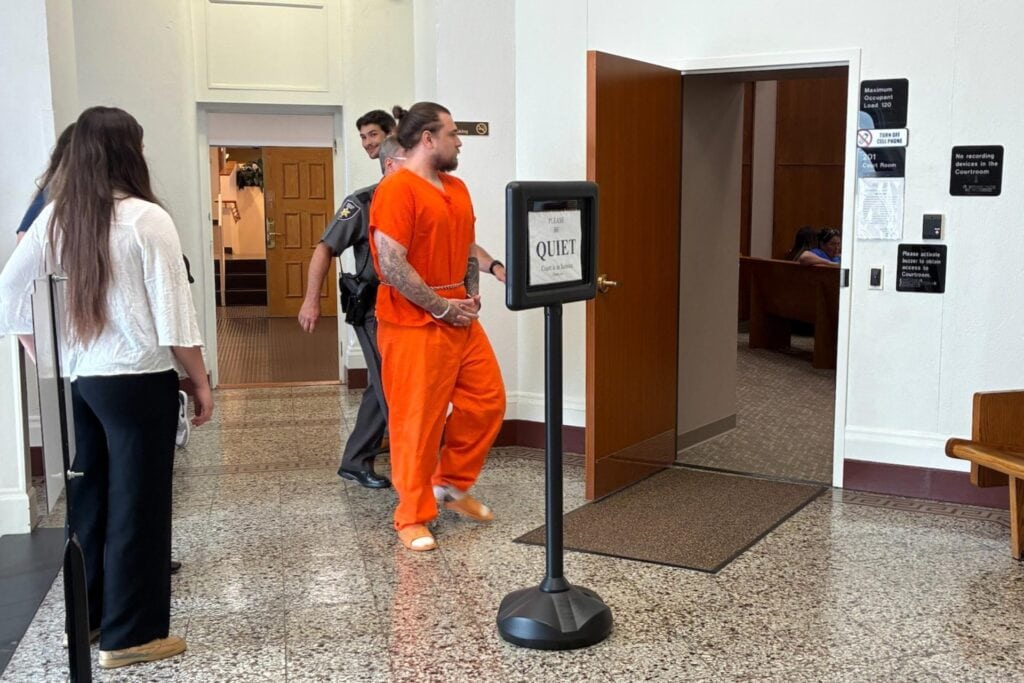BUCKHANNON – The good news first: Buckhannon, West Virginia, is still, in 2019, a relatively safe community when it comes to violent crime.
The bad news?
The city, county – and even region – have a deep-seated drug and addiction problem that no one should shrug their shoulders at.
Buckhannon Police Chief Matt Gregory on Thursday delivered his 2018 annual report on the police department’s activities, investigations, community service and more to city council. One main takeaway was the relationship between drug crime and theft.
“I will say, we are fortunate that Buckhannon remains a safe community,” Gregory told council. “We’re not overwhelmed with the types of violent crimes we see in even other areas of the state, let alone beyond the state.”
Nonetheless, as Gregory has repeatedly said at public forums, “if you have a drug problem, you have a theft problem.”
“There are theft issues – there are property crimes in our community, and I whole-heartedly believe that a lot of that is related to drug issues,” the police chief said. “There’s a distinct reason, year after year, two of the top five crimes are shoplifting and larceny.”
Keep reading for five other chief takeaways from the police chief’s 2018 report.
Some crime never changes.
They may have fluctuated here and there, but for many years, the top five reported crimes have remained relatively similar.
In 2018, they were, in order, shoplifting (138 reports, 14 of which were felonies); larceny (99 reports, nine of which were felonies); drug offenses (85, 14 of which were felonies); hit-and-runs (44); and destruction of property.
“It’s no shock, it’s really the same top five that we have, give or take, every year, with shoplifting leading the way,” Gregory said.
Felonies went up slightly, while misdemeanors dipped a bit.
Interestingly, Gregory pointed out that reports of crime are different from arrests. Reports are simply that – reports. Whereas, if a report is filed and an arrest is made in the case, the case is considered “cleared.”
In 2018, the police department made 81 felony arrests compared to 75 felony arrests in 2017, while 410 misdemeanor arrests were made in 2018 versus 465 misdemeanor arrests in 2017.
“So, felonies were just a little higher than 2017 and misdemeanors a little lower,” Gregory said.
Gregory said the number of criminal reports taken in 2018 – 633 – was also slightly lower than the number of reports taken in 2017 (667) and 2016 (732).
“If you look at the three-year trend, we’re actually lower than 2017 and 2016, but it still remains steady,” Gregory said.
The police department’s clearance rate went up, which indicates that more crimes were either solved or resolved.
The BPD’s clearance rate was up slightly in 2018 to 68 percent from 66 percent in 2017 and 64 percent in 2016.
A report is cleared if the case has been resolved in some fashion, either through an arrest or an exceptional clearance. In most cases, reports are cleared through arrest; however, there are also instances of “exceptional clearance,” Gregory said.
“An exceptional clearance can mean a number of things to include the victim is unwilling to cooperate, the prosecution has declined or the death of an offender,” he explained. “A report can also be ‘unfounded,’ meaning there’s not enough evidence to substantiate that a crime has occurred.”
More vehicle accidents occurred in 2018, and that could possibly be attributed to the McDonald’s/College Avenue turning lane project.
Gregory said more motor vehicle accidents happened in 2018 – 181 – than in 2017 (168) and 2016 (162).
People were injured in 40 of those 181 accidents, and there was one fatality.
“The accidents are up, just a little bit. There’s 13 more accidents in 2018 than what there were in 2017,” Gregory said.
Councilman Robbie Skinner asked if a connection could be drawn between the uptick in accidents and people taking alternative routes to get around the McDonald’s/College Avenue turning lane project.
Gregory said that could be true.
“I know mid-year, we started looking at more of the accident data for the CALEA (Commission on Accreditation for Law Enforcement Agencies) standards, and as you recall … there were a number of accidents along Marion Street that can directly be attributed to the McDonald’s bypass, especially over the summer, so I would say that’s very accurate,” he said.
The chief also noted traffic citations have “sharply declined” from 2,364 in 2016 and 1,201 in 2017 to just 669 in 2018.
“The number of warnings issued in 2018 was 1,161, so that’s almost twice as many tickets as were written,” Gregory said.
There’s a significant amount of methamphetamine in the region.
Gregory reported on not just the activities of the Buckhannon Police Department, but also those of the Mountain Lakes Drug and Violent Crime Unit, saying some of the trends the regional task force has uncovered is indicative of crime activity in the city.
The task force is comprised of the BPD, Upshur County Sheriff’s Department, West Virginia State Police and Braxton County Sheriff’s Department.
Although the task force investigates violent and drug-related crimes in four counties – Upshur, Lewis, Gilmer and Braxton – Gregory said there’s no current participation from Lewis County law enforcement agencies.
Gregory said the Lewis County Sheriff’s Department’s decision to opt out of involvement in the task force could be related to manpower concerns stemming from turnover.
“I know they’ve had a lot of turnover with their agency, so I know they’ve had some manpower concerns, so I don’t know if that’s primarily why,” he said, “but I know that was certainly a factor.”
So far, the task force has made 83 state felony arrests and seven federal felony arrest.
Among other task force statistics, the police chief reviewed was the number of drug seizures – 37 – that have occurred since the unit was created in May 2018 and December 2018; those netted $325,595 in value.
Gregory reviewed the various types and amounts of drugs seized, highlighting the fact that 742 grams of methamphetamine had been confiscated.
“I will point out 742 grams of methamphetamine is substantial,” he told council. “That is a lot of methamphetamine for a small area, especially.”
Gregory said Detroit, Michigan, is the “primary artery” from which heroin, prescription narcotics and crystal meth originate.
“As you recall, a number of years ago, we used to have a lot of problems with meth labs in Upshur County,” he said. “A lot of the manufactured meth [now] is not local – that’s not to say that it doesn’t still occur – but there have been a lot of measures that have been undertaken over the years that have really curbed the proliferation of meth labs.”
One of those measures includes tightening the restrictions around purchasing Sudafed.
“The task force is still in its infancy, so as it builds its cases, you’ve seen a lot of lower level arrests on lower level dealers that have been arrested,” Gregory said. “There are some more significant cases that are represented in these numbers as well that are either pending or have been resolved.
“I believe that it’s making a positive impact in our community, in our region. Just imagine if it wasn’t in existence, how much of this would still be out there?”
Per CALEA standards, the BPD now analyzes vehicular pursuits and “use of force.”
When the police department agreed to pursue accreditation through the Commission on Accreditation of Law Enforcement Agencies, or CALEA, that decision add two new items to Gregory’s annual report: a review of vehicular pursuits and an analysis of “use of force.”
In order to comply with CALEA standards, BPD officers must file a post-pursuit report following every vehicle chase to ensure those standards have been adhered to – for instance, that lights and sirens have been activated.
In addition to the post-pursuit reports, there are GPS units in each officer’s cruiser, which allows Gregory, Lt. Doug Loudin and even city attorney Tom O’Neill to check on an officer’s average speed and see the route she or he took.
In 2018, there were eight reported pursuits, and all resulted in the driver being taken into custody at the pursuit’s end, Gregory said. In addition, reported top speeds ranged from 60-95 mph, and in three of the eight cases, the driver was under the influence of a controlled substance.
Gregory said the BPD also now reports on use of force, which includes instances of physical force, discharge of a weapon or chemical agent – and even simply the display of a firearm or other weapon.
“Because of how stringent this policy is … and this is pursuant to four CALEA guidelines … we probably overreport use of force in terms of what we’re reporting on in terms of comparison to other agencies,” Gregory said. “A lot of agencies only report use of force if they discharge a firearm or if they actually use a less lethal type of weapon.”
However, under CALEA standards if an office simply “takes a taser out and points it at the individual, but doesn’t display it, that constitutes a use of force,” Gregory said.
Use of force was involved in 6.3 percent of all arrest incidents, according to the year-end analysis.
“The most common circumstance for why force was used was because the person was fleeing in a vehicle,” the police chief said. “This occurred in seven of the 25 incidents.”
Physical force was used in 20 of incidents, while a taser was displayed in eight incidents but never used. Although firearms were displayed in nine instances, there were no cases of them being fired.
Gregory also noted most of the instances of use of force occurred during the evening shift, between 4 p.m. and midnight, and said 60 percent of “use of force” incidents involved intoxicated people.












